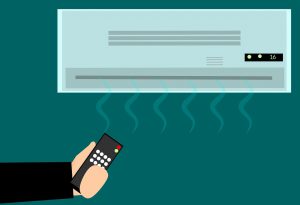A lot of the news these days is worrying for small businesses: global pandemics, rising inflation, etc. But while you’re worrying about these more immediate threats, are you also thinking about something more long-term? Are you disturbed by climate change, and wondering if there’s anything you, with your small business, can do to help? If so, you might be feeling a bit helpless, thinking that only big businesses have the resources to reduce their carbon footprint. But that’s not necessarily true! Small businesses can get to carbon neutral, too – so take a look at the following suggestions that will benefit the environment and your business.
What Does It Mean to Be Carbon Neutral?
So when we say “carbon neutral,” what do we mean? It doesn’t mean that you (necessarily) are out there, physically cleaning up the rivers in your area. It has more to do with evening out the impact your business is making on the environment – hence, the word “neutral.”
What does that mean? Well, everything you do related to your business – driving, heating/cooling and lighting your workspace, operating a website, shipping, flying, etc – expels carbon dioxide and other greenhouse gasses into the atmosphere. We’re talking here about your business’s carbon footprint – and that footprint can be pretty big, and pretty hard to rein in.
But, with that being said, there are things you can do to both reduce your carbon output and offset it, essentially bringing your carbon output down to a net zero, even though you’ll still be necessarily engaging in activities that produce carbon. In other words, for every ounce of carbon that you have to dump into the atmosphere, you find a way to remove an ounce.
The Benefits for Small Businesses of Going Carbon Neutral
If offsetting your carbon output to bring your business to carbon neutral sounds, well, a bit complicated and time-consuming, we’re not going to lie – it can be. But taking the time to do it is not only good for the world; it can also be good for your business. So before we get to the specific steps you can take to make the process of getting to carbon neutral easier, let’s look at how doing so can be beneficial for you:
- You won’t be just another “greenwasher” – Nowadays, with so many consumers more concerned about the environment, a lot of businesses are trying to tout their “green” credentials, but aren’t exactly making the grade. Consumers are becoming a lot more savvy when it comes to greenwashing (or businesses offering exaggerated, misleading, or unsupported claims about their environmental practices), so if you can both talk the talk and walk the walk, you could come out ahead of your competition. In fact, consider this: almost 70% of Americans say they are willing to pay more for brands that help them reduce their negative impact on the environment, and more than 80% prefer to buy from sustainable sellers.
- Investments in green energy are good investments – Yes, it can be pretty pricey to switch to renewable forms of energy, but if you do invest in solar panels, for example, your monthly energy bills will reduced, and any surplus energy your solar energy systems produces can be sold back to suppliers, which will generate additional income for your business. But even if you don’t want to make a huge investment in a new renewable energy system, any reduction in energy use will save you money!
The benefits sound great, of course, but can your small business actually afford the process of getting to carbon neutral, both in terms of money and time? If you take a look at the following steps, you might find that it can actually work for your small business, with some planning (and you might even end up saving some money!)
Steps You Can Take
Working towards carbon neutrality requires some bigger-picture thinking and strategic planning. Yes, little things like putting out more recycling bins can all add up, but you really need to be doing more tracking of what you’re currently using/outputting, and researching ways to offset. But don’t worry: everything you do will help! So here’s where to start:

1. Calculate your emissions
Before you set out to reduce your emissions, it’s a good idea to get an idea of the baseline from which you’re starting. Head online and look for calculators that allow businesses to figure out what they’re putting out there, so you know what you’re going to need to lower, and you can set goals for reduction.
2. Make a plan, and stick to it
Like we said, any little bit helps, but if you’re really committed to getting to carbon neutral, you’ll need to have a plan that includes systematically figuring out where you’re going to implement changes to curb your emissions. This will also help you know how much you’ll need to spend on cutting your emissions – and how much you could save.
You can then set a goal for becoming carbon neutral, say, in 5 years. Your goal could look like this:
- Year 1 Target: 20 % reduction in baseline emissions via energy efficiency actions or carbon offsets.
- Year 2 Target: 40% reduction in baseline emissions via energy efficiency actions or carbon offsets
- Etc
Now, check out the following steps to begin making your carbon reduction and offsetting plan.
3. Reduce, reuse, recycle
Yep, just like a lot of people are trying to do in their daily lives, you’ll have to get down to the process of reducing, reusing, and recycling – but on a bigger and more strategic scale, of course. Again, it goes beyond putting the right bins out. You can:
- Move towards post-consumer waste products wherever possible
- Decrease or eliminate the single-use materials you use – There are often biodegradable options to replace plastics (think paper or raffia), or better yet, reuse what you already have.
- Think about sourcing – Remember, if you’re getting supplies or packing materials that come from halfway across the world, you’re already accumulating a carbon footprint.
- Recycle everything you can’t reduce – The goal is to get those trash cans as empty as possible! You can even consider composting any food waste your business generates.
3. Get Energy Efficient
Switching to solar or other types of renewable energy would be ideal, but if that’s not in the cards right now, there are other ways you can be more energy efficient at your business. You can:
- Switch to LED lighting
- Utilize as much natural light as possible
- Use timers and motion sensors for your lighting
- Invest in energy-efficient appliances
- Clean your air filters
4. Travel less
Do you and your employees fly and/or drive a lot for your business? Consider this: one little flight from NY to Seattle emits half a metric ton of CO2! And driving? The average driver emits 4.6 metric tons of CO2 a year, but if you’re taking extra road trips for business, you’re emitting even more. You can’t always avoid driving and flying, but you shouldn’t book business trips willy nilly, or should try to find more sustainable ways of traveling whenever possible.
5. Get employees on board
Speaking of the actions we take that make a difference, like driving, talk to your employees about your desire to take your business to carbon neutral and get them on board in doing their part. Encourage carpooling or biking, and consider asking them to agree to meatless foods for catered events. And of course, they can do their part by recycling, or even coming up with innovative ways to reduce and reuse! Don’t forget to ask them to communicate your business’s green ambitions to your customers, so everyone knows about your efforts.
6. Offset all that pesky remaining carbon
All of the above is a great start when it comes to reducing your environmental impact, but it’s simply impossible to cut all carbon emissions without closing up shop. So the final thing you can do is offset your carbon. You can hire an organization to do it for you, but that’s a big investment for many small businesses.
So instead, you can calculate your new carbon footprint after implementing all of your new policies, and find projects like wind farms, landfill gas capture, or reforestation to invest in. Programs like these help either remove harmful excess emissions like carbon and methane from the environment or lessen our reliance on non-renewable resources, meaning the money you give them will essentially be making things even when it comes to your carbon emissions. And that’s where carbon neutrality comes in: the goal is to be at net zero in terms of emissions.
One important thing to note about carbon offsetting: be sure to check that the projects you’re funding are legitimate, and are third-party verified!
The road to becoming carbon neutral is by no means an easy one, but it’s worth it if it’s something you believe in. The actions you take now could mean a secure future for your business and our planet – so let us know if getting to carbon neutral is a goal of yours, and how you plan on getting there!
Co-written by Joanna Bowling

